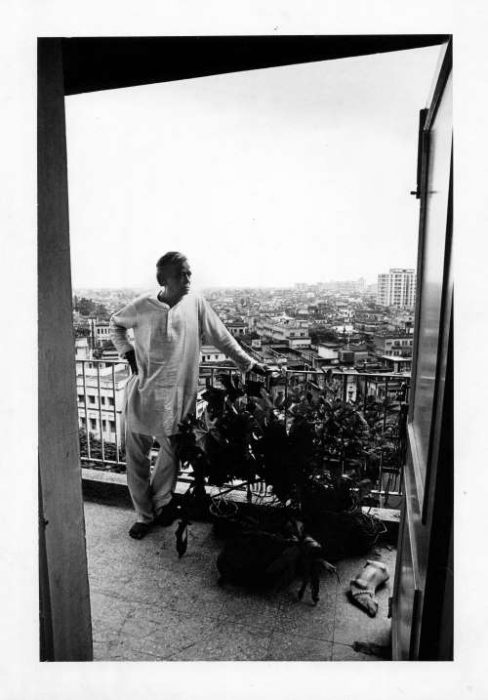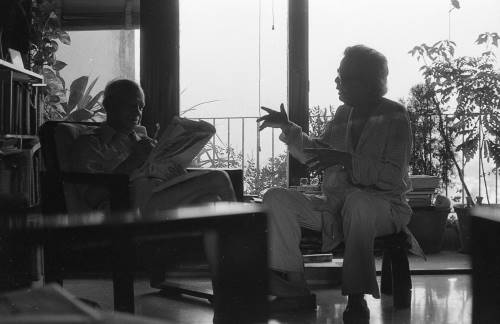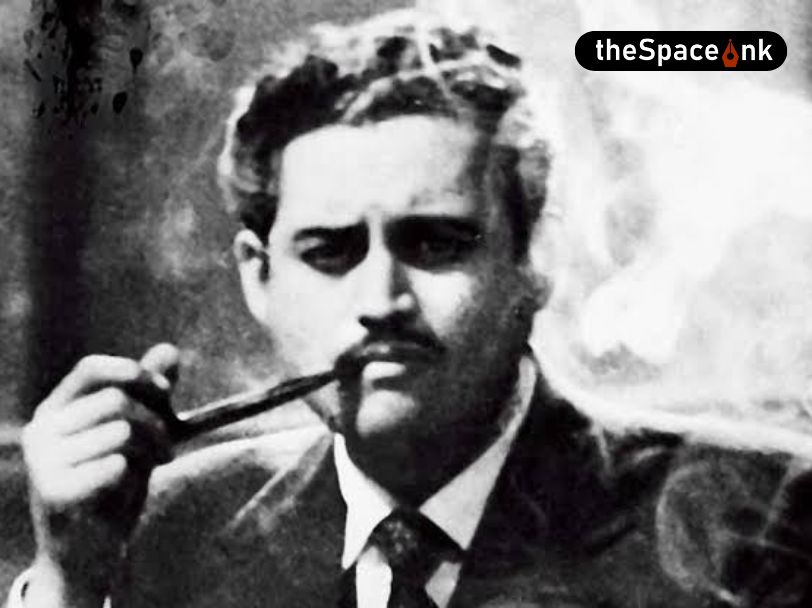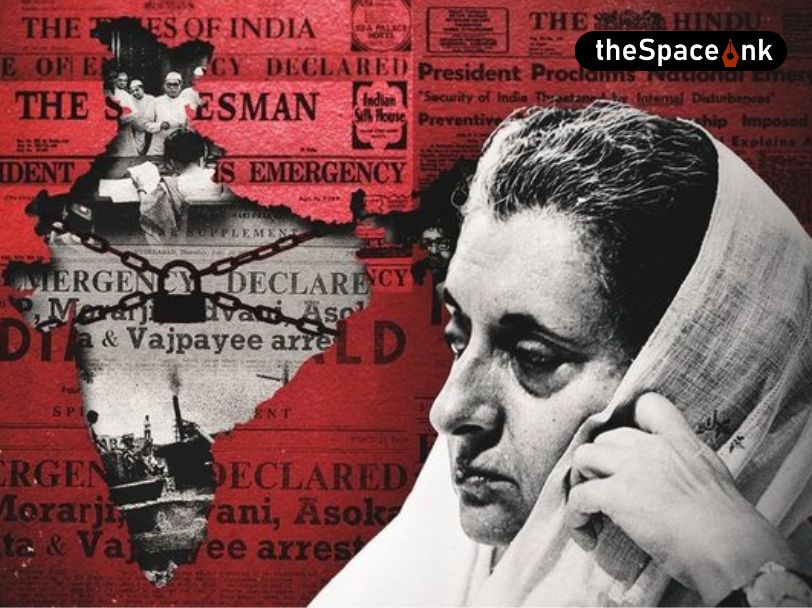A translated and shortened version of this article appeared in ‘Robbar’ magazine on December 5, 2021.
I have always shied away from gurus and cults, and those who know me well would be surprised at the title that I have chosen. But it encapsulates a deep sense of gratitude to a person who, incidentally, would have roared with laughter had he read these words. When I look back at the seven decades that I have gone through and the many people I have come across, I have absolutely no qualms in acknowledging RP or Shantul Gupta, as a guru without whom the world around would not have been so enriching.
I was taken to the apartment of this absolutely amazing gentleman sometime in 1979 by another fascinating person, Bibhash Gupta. Bibhash Babu, as I called him, was a philatelist and an antiquarian with a very wide range of other interests, that included book production, reprography and the history and culture of British Kolkata. He had been introduced to me by a senior officer of Lalbazar, the historic bastion of Kolkata Police. I was then in charge of the Barrackpore Subdivision of the district that surrounded Kolkata but had a rather odd name— 24 Parganas. Since its borders merged with the northern and eastern suburbs of Kolkata, it was easier for me to visit the metropolis once in a while. Besides, the district headquarters and my bosses were all in Kolkata and I would be summoned at short notice.
It was during one of these visits to the metropolis that I was taken to RP Gupta’s apartment near Gariahat in south Kolkata. He stayed in a multi-storied building in upmarket Mandeville Gardens. As the lift stopped at his floor, a large black and white print of two nautch girls, dancers, decently dressed of course, greeted us at the entrance of his flat. It was the enlargement of a nineteenth century woodcut block print of Kolkata that was securely mounted on a big board. RP explained to me later that this unmistakable piece of art actually served to distinguish his flat from among the dozens of other identical looking ones in his block. Every vendor and delivery hand in the neighbourhood knew him as the old man who lived in that apartment with two dancing ladies pasted on its door.

RP had built a formidable reputation by then, and as Ian Jack said, he “was many things: a bibliophile, a writer in both English and Bengali, a gastronome, a cineaste, a collector of painting. Supremely, and in the traditions of his city, he was also a talker, with an exquisite, magpie gift for anecdotes and recherché facts and, eagle-like, for triumphant assertion”. When I met him he was either in his last year as the public relations manager at a corporate head office of the Tatas or had just retired after a long innings. Though he had done an excellent job of his assignment and was widely known as a successful PR person, it was his personal reputation as a scholar, a critic, an epicurean and a supremely knowledgeable expert on books and Kalighat patachitra paintings superseded much of everything else. This was long before the internet and Google were available, and where several domains of knowledge were concerned, Shantul Gupta served as their honourable predecessor. He was, in fact, the first real polymath I had met and hardly anyone went back from him without a satisfactory reply. They would, in fact, pick up much more than they had come to him for.
Though he had done an excellent job of his assignment and was widely known as a successful PR person, it was his personal reputation as a scholar, a critic, an epicurean and a supremely knowledgeable expert on books and Kalighat patachitra paintings superseded much of everything else.
As I entered RP Gupta’s flat, I faced a slender man in a half-sleeved white vest and white pajamas, rocking in a chair, with books piled on a stool next to him. I discovered later that this was his usual attire and that corner was his den where he spent hours surrounded by books, prints, maps and old sketches. His numerous books were neatly stacked in shelves along the walls and also accommodated in shorter stands in a rectangle. It was so arranged that there were two openings. One led to a small but very airy east-facing balcony that allowed a breathtaking view of Kolkata and the other towards his dining and living space. He must have wondered what on earth had brought this young raw bureaucrat to his door, and after a few polite questions, became totally engrossed in a conversation with Bibhash Babu. As I listened in, I was introduced to a new world that I scarcely knew existed. Both had spent all their lives with books and spoke animatedly of old prints and rare books that were really hard to find. Their excitement and enthusiasm somehow reminded me of punters and bookies at the race course. Little did I know then that they would draw me, over the years, into this passionate love for books and that I would partake of the sheer ecstasy of chancing upon a long out-of-print edition. What left indelible impressions on me that day were not only his utter simplicity but also the casual manner in which he spoke of very esoteric subjects and the dialect of old north Kolkata that he had mastered.
I soon discovered that he also spoke pure Sanskritised Bengali and Odiya with equal felicity and of course, English, in several of its fascinating variants. It was a sheer pleasure to hear him speak on any topic. It was much later that I learnt that he was born in Cuttack, Odisha, and his grandfather was the first Indian principal of the famous Ravenshaw College. After graduation, he moved to Kolkata, following his father’s untimely death. War-time Kolkata had its added attractions as the city was then swarming with allied soldiers and military vehicles. The Americans were a novelty as they introduced an English culture that was so different from the uppity British rulers and they mixed more freely with the local populace. They brought in cigarettes, chocolates, canned foods, comics and other attractive items which they shared quite ungrudgingly with the citizens of Kolkata. They loved movies and Kolkata was, thus, better exposed to Hollywood films as well. It was in this milieu that RP moved in as a keen observer and he was soon mesmerised by the world of foreign publications. He savoured this atmosphere and I heard that he did pretty little during this period, except for giving out a few tuitions and taking up odd jobs. He soaked in prodigious amounts of knowledge for no particular reason — other than the sheer pleasure that it accorded him. He came across several other creative persons and they exchanged notes and ideas. I think this is when he befriended people like Satyajit Ray, Kamal Kumar Mazumdar, Mulk Raj Anand and Raghubir Singh who were later acknowledged as geniuses in their spheres. In fact RP Gupta joined Ray, Chidananda Dasgupta, Banshi Chandra Gupta and a handful of avid lovers of good cinema to establish the pioneering Calcutta Film Society in 1947. Though he moved on to other specialisations, he could wax eloquent on the bio-scope as he insisted on calling it.

It was a treat to hear him glide from topic to topic in the true style of adda, the quintessentially Bengali tradition of open-ended free-flowing discussion. But I soon learnt to jot down my questions as I learnt more that way. I visited him once in a while on my way back to Barrackpore after meetings at Alipore, my district headquarters, which was only two or three miles away. This little detour would recharge my batteries. Though I was familiar with the book stalls of College Street, it was from RP that I learnt what to look for in the hawking zones on the pavements where old books were resold. Consequently, my own collection of books was growing as thankfully my newly married wife was quite tolerant of such indulgences. My salary was a pittance but I kept adding shelves and they started filling up quite soon.
Within a year and a half, I moved to Asansol and my visits to RP and the book markets of Kolkata became infrequent. But as soon as I was transferred to Barasat in the suburbs of Kolkata in 1982, I started meeting him more often. I would occasionally pick up a bottle of Old Monk rum on the way and, on a few occasions, his most hospitable wife, Moni di, persuaded me to stay a little longer to share their dinner. He took me under his wings quite seriously by then and led me to several books on Kolkata in the eighteenth and nineteenth centuries. Bibhash Babu was a great help as he managed to procure copies of completely out-of-print books. This is when I had made friends with P Thankappan Nair, the ‘barefoot historian of Kolkata’ who was another treasure-house of knowledge about the city. In fact, I soon learnt to contribute new tidbits of information to Shantul da, who appeared pleasantly surprised to see how I had progressed.
He taught me much of what I came to know of the quaint folk art that flourished in the Kalighat locality of nineteenth century Kolkata. This form was unique to the city and was better known as ‘Kalighat Pat’ (pronounced as ‘pot’). It had been introduced to the western world by William and Mildred Archer and I managed to locate a couple of their publications from second hand book stalls. From Pat, I was drawn into other forms of folk crafts and popular expressions of creativity.
he befriended people like Satyajit Ray, Kamal Kumar Mazumdar, Mulk Raj Anand and Raghubir Singh who were later acknowledged as geniuses in their spheres. In fact RP Gupta joined Ray, Chidananda Dasgupta, Banshi Chandra Gupta and a handful of avid lovers of good cinema to establish the pioneering Calcutta Film Society in 1947.
I was soon posted in the city itself but somehow the dreariness of the bureaucracy started getting on my nerves. My insistence on doing things my own way soon managed to get me into problems with many of my superiors who insisted on complete obedience, the least of questioning, on numerous rules and precedents. I learnt that the bureaucracy has its methods of ensuring compliance, even if this often led to the mental debilitation of its practitioners. But my solace was that I had, by then, found my little ray of sunshine.
However, Despite my best efforts, I was drawn into a major difference of opinion with my minister and the departmental secretary. This is when the government decided to teach me a lesson by sending me off to what was known as a ‘punishment posting’. It turned out to be the very unglamorous and inconsequential position of the Managing Director of the state’s handicraft development company where no IAS officer had ever been posted before. What my tormentors did not realise was that I was quite pleased with the turn of events, even though a lot of my colleagues pitied my ‘downfall’ and others snickered. RP was delighted too and encouraged me to plunge headlong into the challenge and said I could now indulge in my newly-developed passion for the crafts and also get paid for it. There were a lot of teething problems with the horribly neglected organisation, but with the encouragement of persons in love with the arts, like RP, I managed to look invariably at the silver lining.
He dropped into my little office once in a while, and I remember the day he walked in with Mulk Raj Anand. I had met Mr Anand at RP’s place twice before and remember having helped pour some scalding hot water over brandy into his balloon glass. Shantul da presented me a book on woodcut paintings of nineteenth century Kolkata that I had been looking at enviously over the last few months, wondering whether to spend so much on it. I was overwhelmed and promptly handed it to Mulk Raj to write a few words on it. His touching note is scrawled not only on the title page of the book that I treasure but is etched in my mind forever. It was an exhortation to do something good for the artisanal class: “give them back their arts and pick from them the products of their skill”. The high-water mark of my tenure was my longish and detailed tour of the arts and crafts of Bishnupur and certain traditional villages of highly skilled artisans of Bankura district. Shantul da and Amol Ghosh had accompanied me on this journey and I learnt so much from them. We sat with potters in Panchmura village discussing their problems of selling their exquisite, long-necked ’Bankura horses’. We delved into the wonder of clicking Jacquard looms that produced the fine Baluchari silk sarees of Bishnupur. We were lucky to see the last of the few surviving artisans demonstrate their art of making unique circular Dashavatara playing cards that were played centuries ago. I remember posing in front of the elegant craftsmanship of the terracotta temples of Vishnupur and was enriched by RP’s knowledge of the older crafts. He seemed to enjoy the outing, encouraging me all along to keep notes, while Amol da went on taking photographs.
By that time, I had picked up more confidence and had started writing in the newspapers as well — mainly on interesting facets of old Kolkata and its culture.
From the middle of 1985, however, I was away from Kolkata and RP Gupta for a full seven years. I was posted first as the district magistrate of Barddhaman (where he dropped in once) and then on to the commerce ministry in Delhi. But, by that time, Shantul da had moulded me and I had discovered a whole new view of life. In Delhi, Mulk Raj Anand was good enough to invite me to his home and took me around his Taikhana or the basement of his house. He explained that it was built in the style of old north Indian homes, in such a way that this subterranean floor was cooler during the blazing hot summer and also felt warmer in winter. I remember spending a few sessions with him on equally interesting topics such as the ancient symbols that had been etched by the earliest humans and still continue to be with us as part of our cultural traditions. He could go on for hours explaining, for instance, how the Paisley symbol began as the stamp of the clenched fist and was later refined as a motif on textiles.
Equally enriching were RP’s other illustrious friends like Basanta Chowdhry, the famous actor who was also a connoisseur of several fine objets d’ art. He was an authority on the coins of north-eastern India and its neighbouring kingdoms. He had an enviable collection of Ganesha idols in a wide variety of materials and a large array of shawls from different parts of the subcontinent. My fascination with hand-woven and finely-crafted shawls was picked up from him. Then I came to know Nikhil Sarkar, who wrote under his pseudonym, Sripantha. He was a very renowned scholar of subaltern Kolkata and its quaint culture. He seemed to know every old locality and its history so well and narrated the tales with such eloquence that I was soon drawn into his writings.
Talking to RP was not only a rewarding experience but getting to know the company he kept was a thrill by itself. Another unforgettable personality I was introduced to by RP was Shuvo Tagore. An artist and a satirist, he was considerably older than RP. I remember visiting his apartment at the crossing of Chowringhee and SN Banerjee Road with RP on a couple of occasions. It was an old British accommodation, stuffed with paintings, sculptures, bric a brac, antiques and his unique collection of pipes, hookahs and other products related to tobacco. One could spend days in that flat without any interruption and there would still be so much to see. Basanta Chowdhry joined us during one such visit and I wish I had taken a photograph of the three great men together.
I could go on reminiscing on the varied interests that Shantul da kindled in me. These are gifts that not all gurus could ever pass on to their followers. The range of their specialisations stirred within me an urge to know more and more of so many new areas. Central to the entire theme was RP and his very sincere approach, his passionate love for knowledge. He never bowled anyone over with his overwhelming knowledge, he passed on the joy of knowing and living life to the full.
From Shakespeare to Tagore, from Tanjore paintings to the finest of wines, from odd tales about Sonagachi, Kolkata’s vast red-light zone to early polychromatic prints of Chorebagan — RP could recite and regale for hours. As I moved up the ranks, life became busier and more hectic as greater responsibilities were thrust on me. I had much less time for my pursuits and moved to newer areas like folk religion and social history. My visits were also spaced out at long intervals, though we kept in touch over the phone. I would drop in unannounced if ever I happened to pass his area.
By 1999, I moved into my own little place in Dover Terrace near Gariahat and promised him that I would walk over to his flat more often. He was delighted, but before I could carry out my threat, he left the world. I could not even see his cortège as I was in Delhi that day for some national level conference. Tragic. But to me, he is still around, encouraging me to know more and telling to admire to prick my ears to hark the shrill call of the innocuous street vendor — as an inseparable part of our cultural life.
All photographs used in this article are from the personal collection of RP Gupta’s family.
Jawhar Sircar is a former Member of Parliament. He retired from the Indian Administrative Service as India’s Culture Secy and was later Chief Executive Officer of the public broadcaster, Prasar Bharati. He is well-known for his articles on history, culture and politics and his columns appear in several leading Indian and foreign newspapers and magazines in English and Bengali. Sircar has also been the Chairman of the Centre for Studies in Social Sciences, Kolkata.









2 Responses
Exquisite article! Splendid.
Jawhar Sircar, The book Art of Shubho Thakur , does it ring a bell?